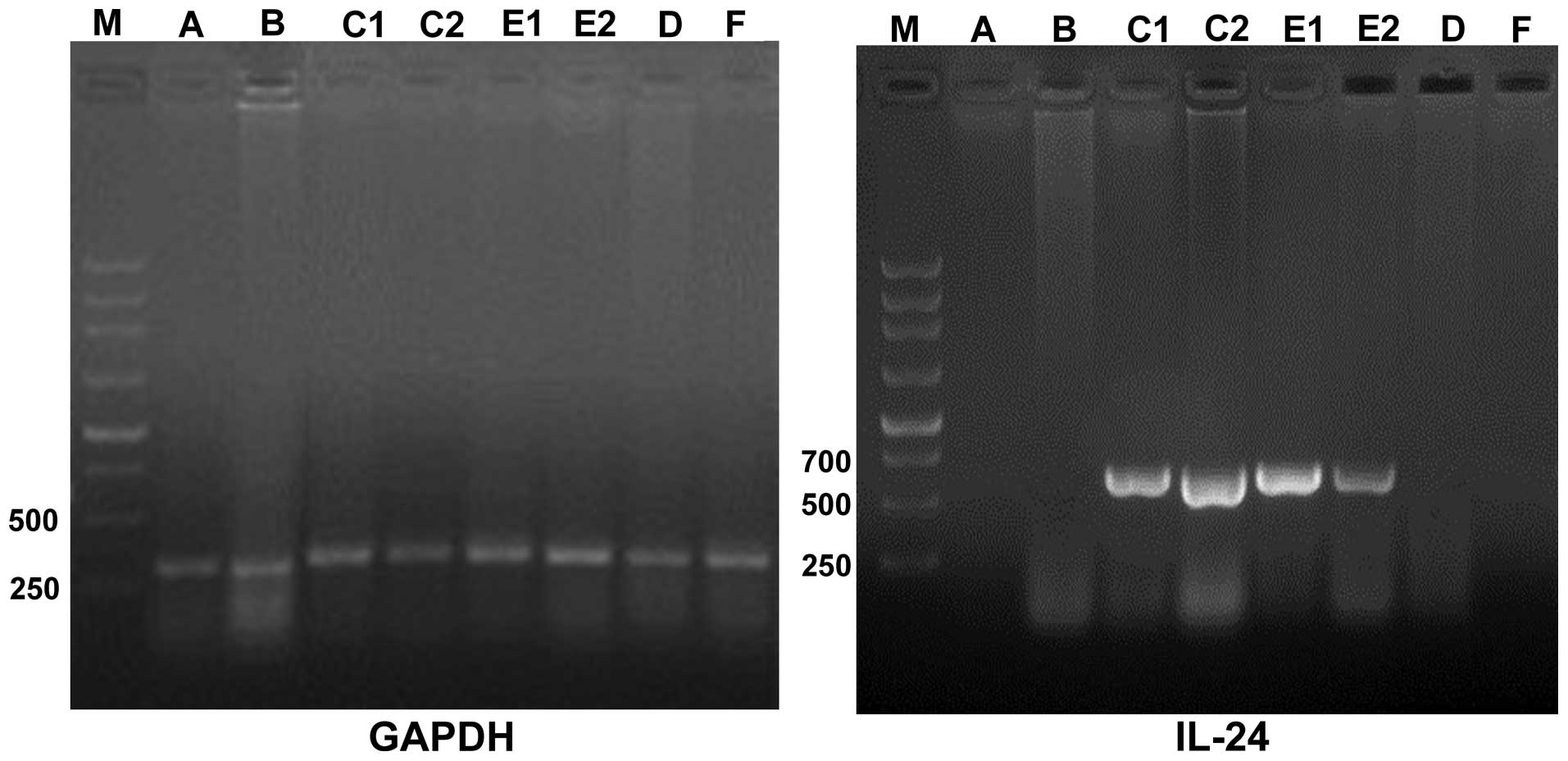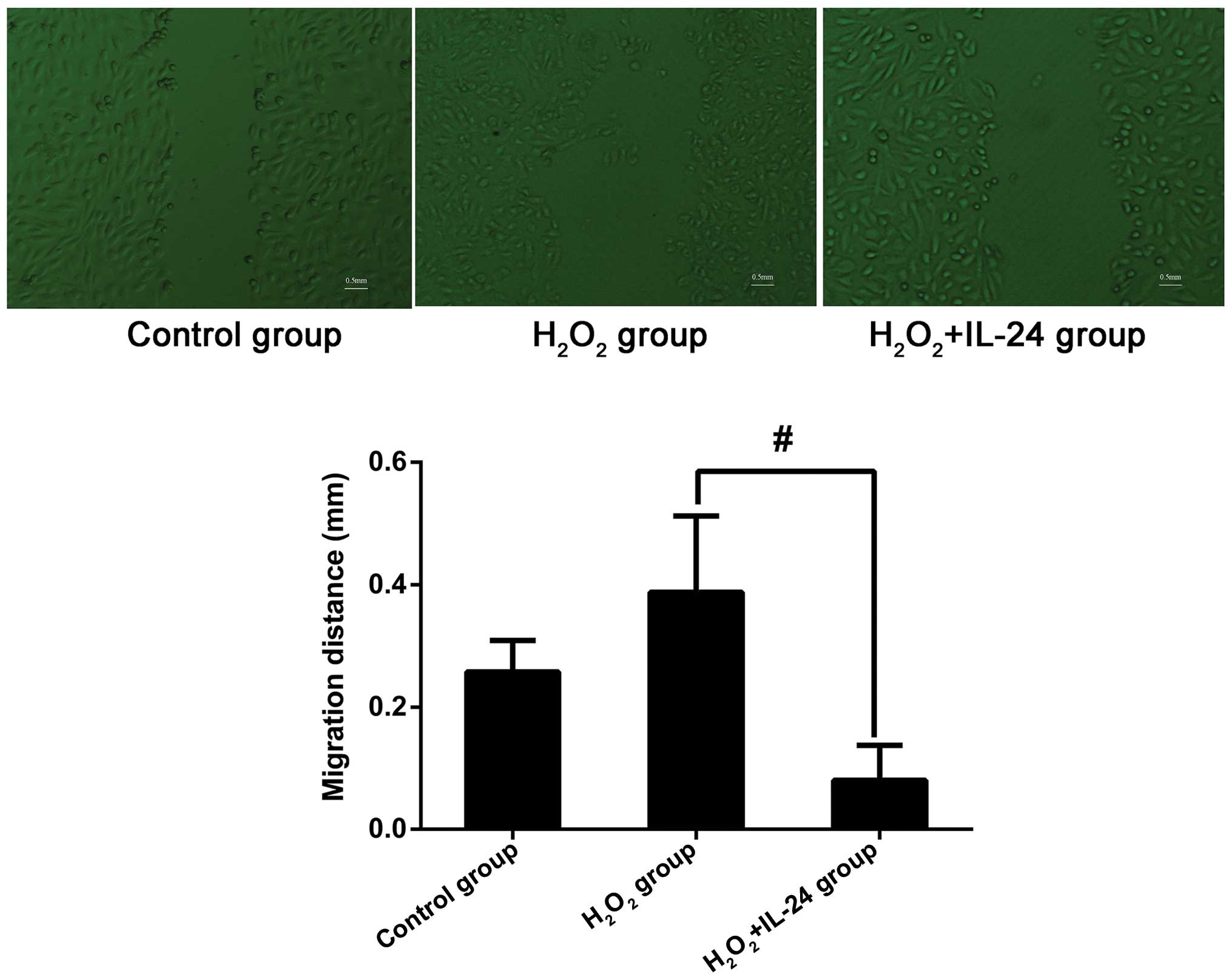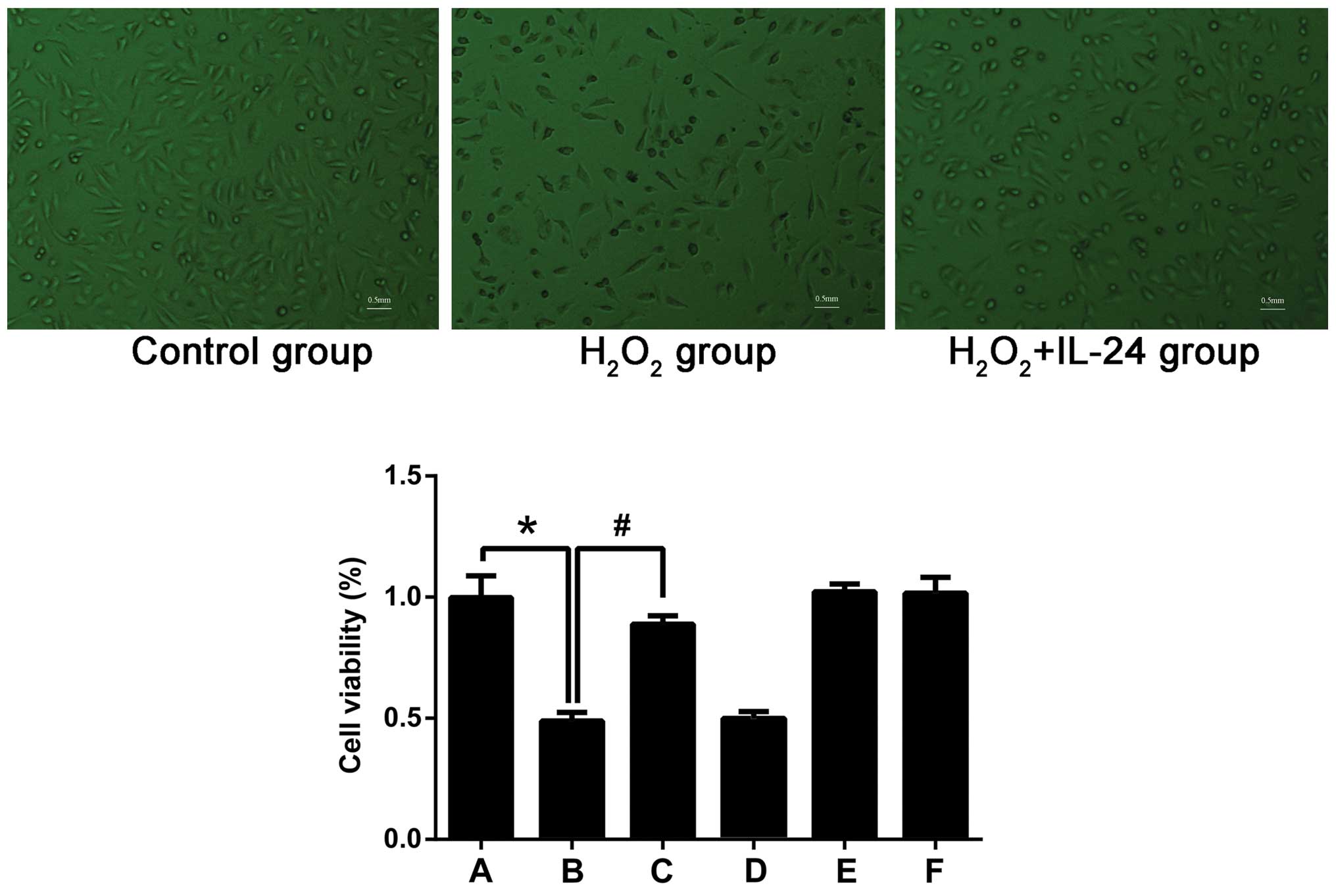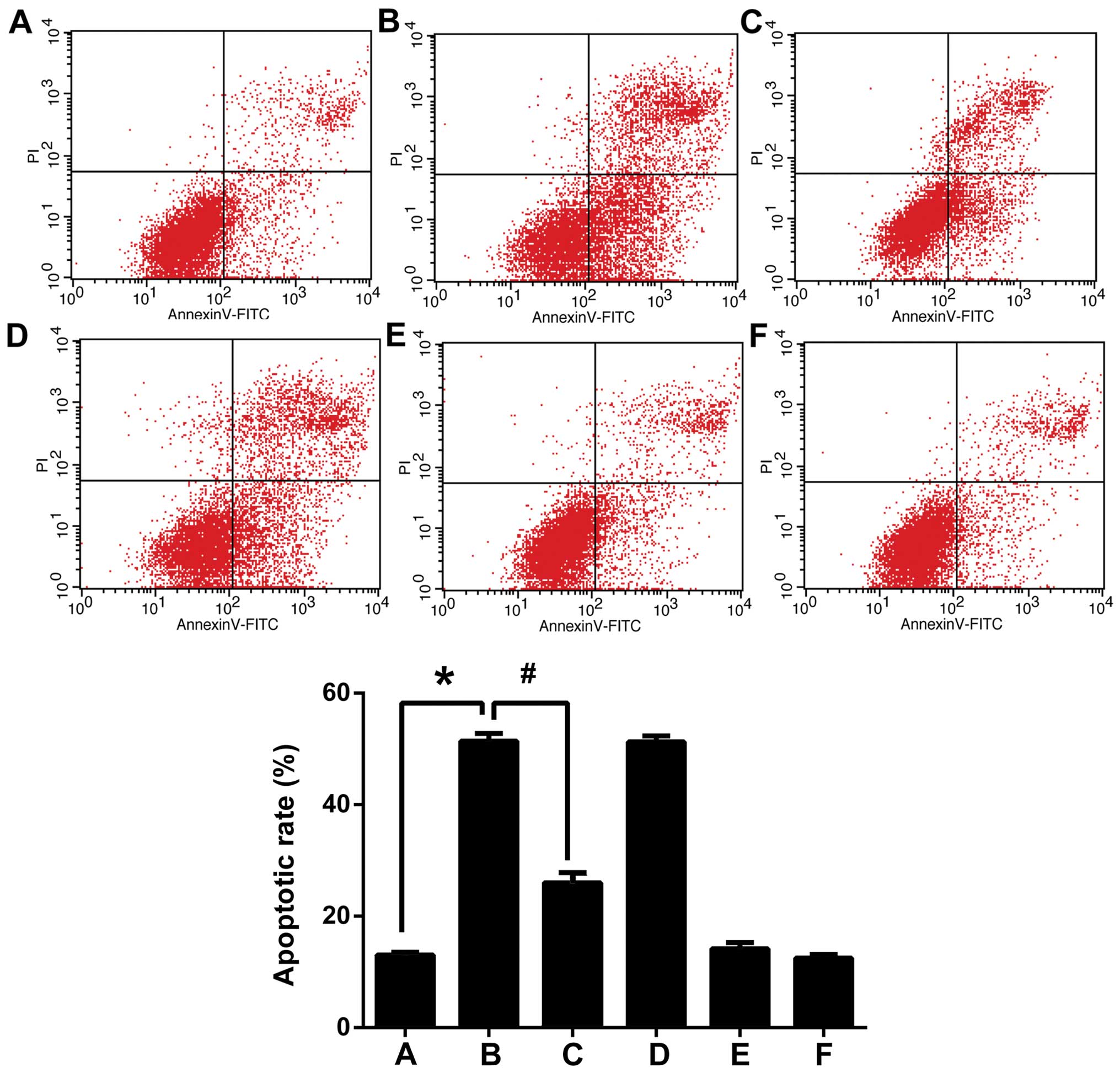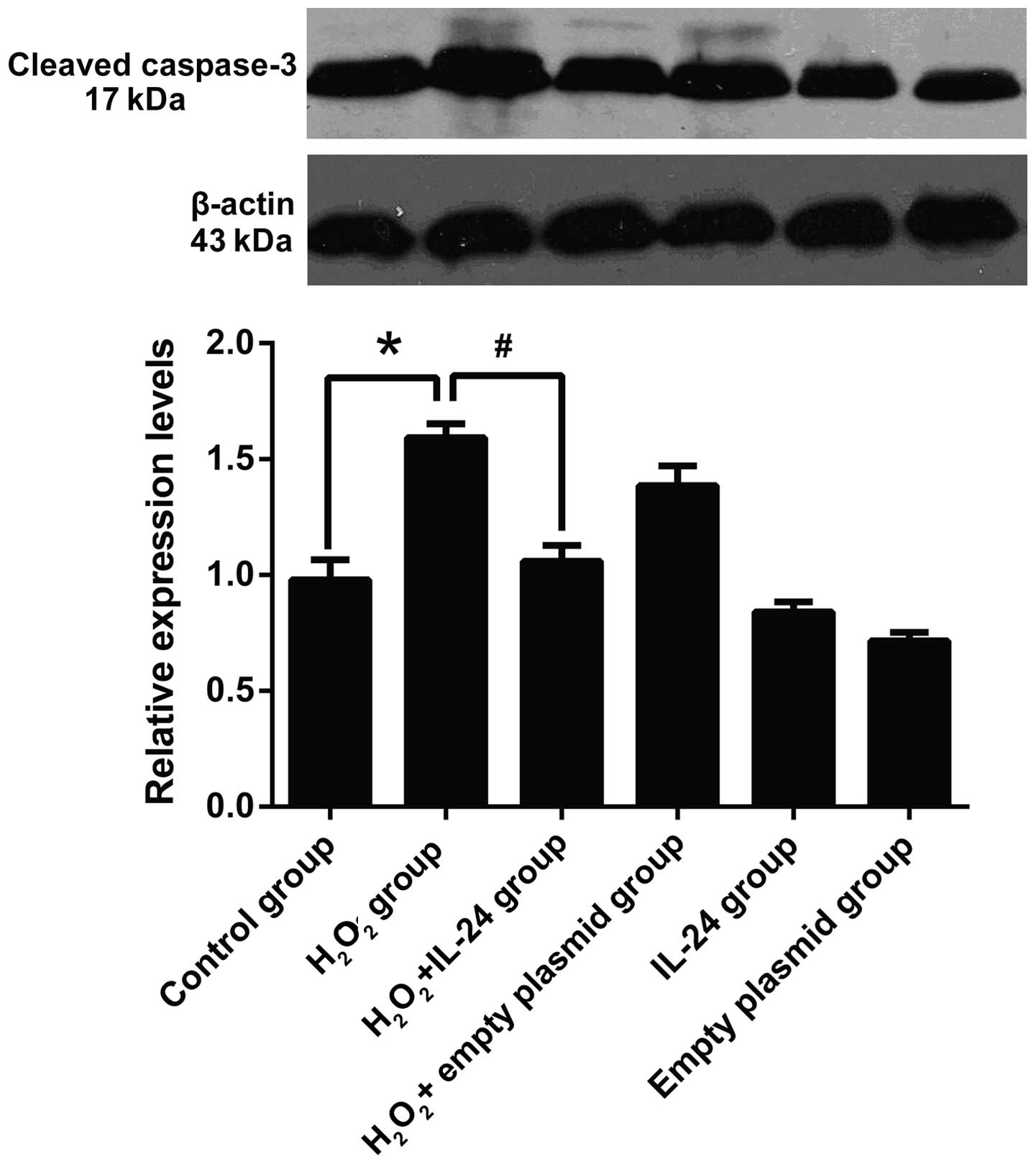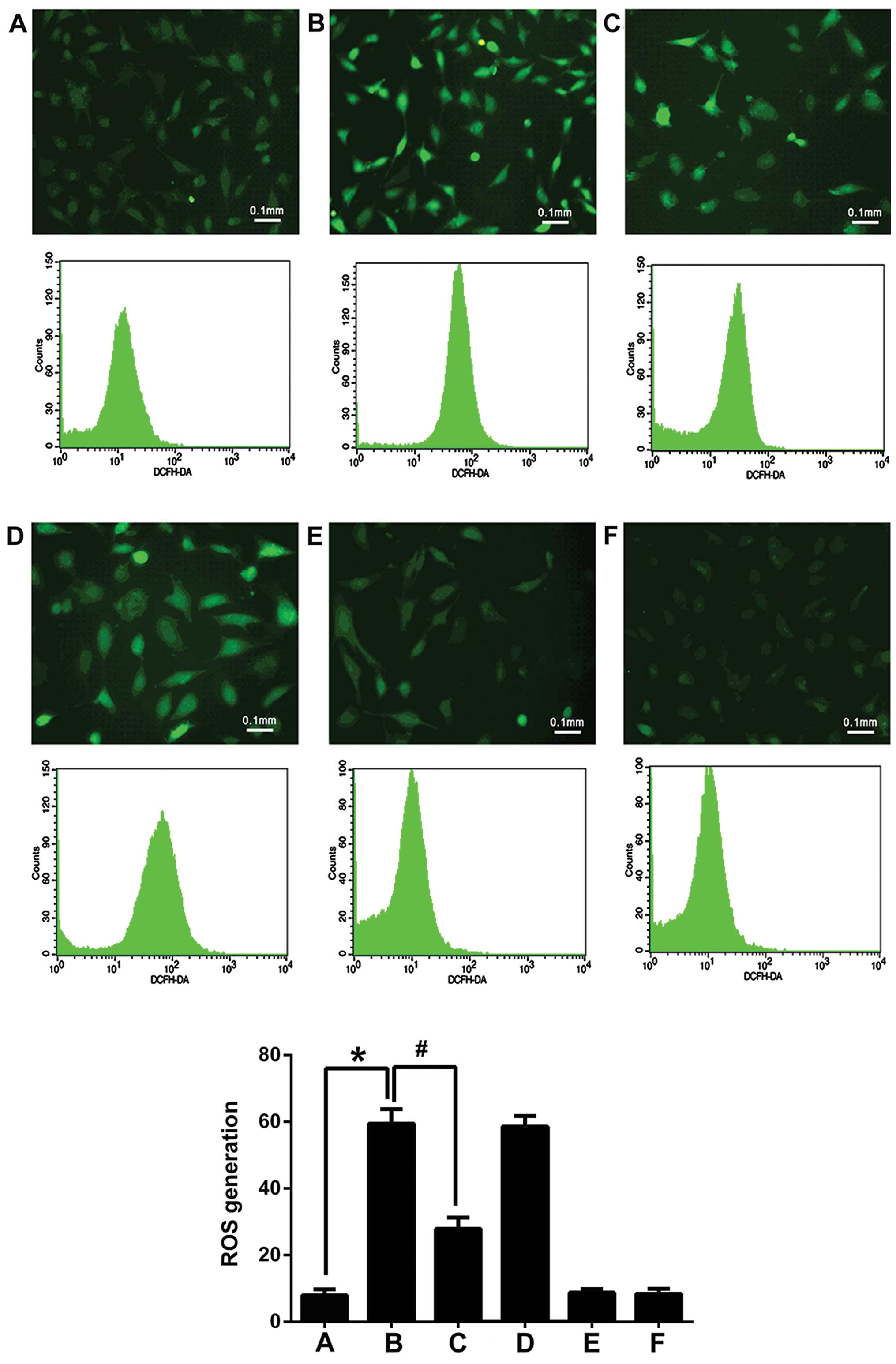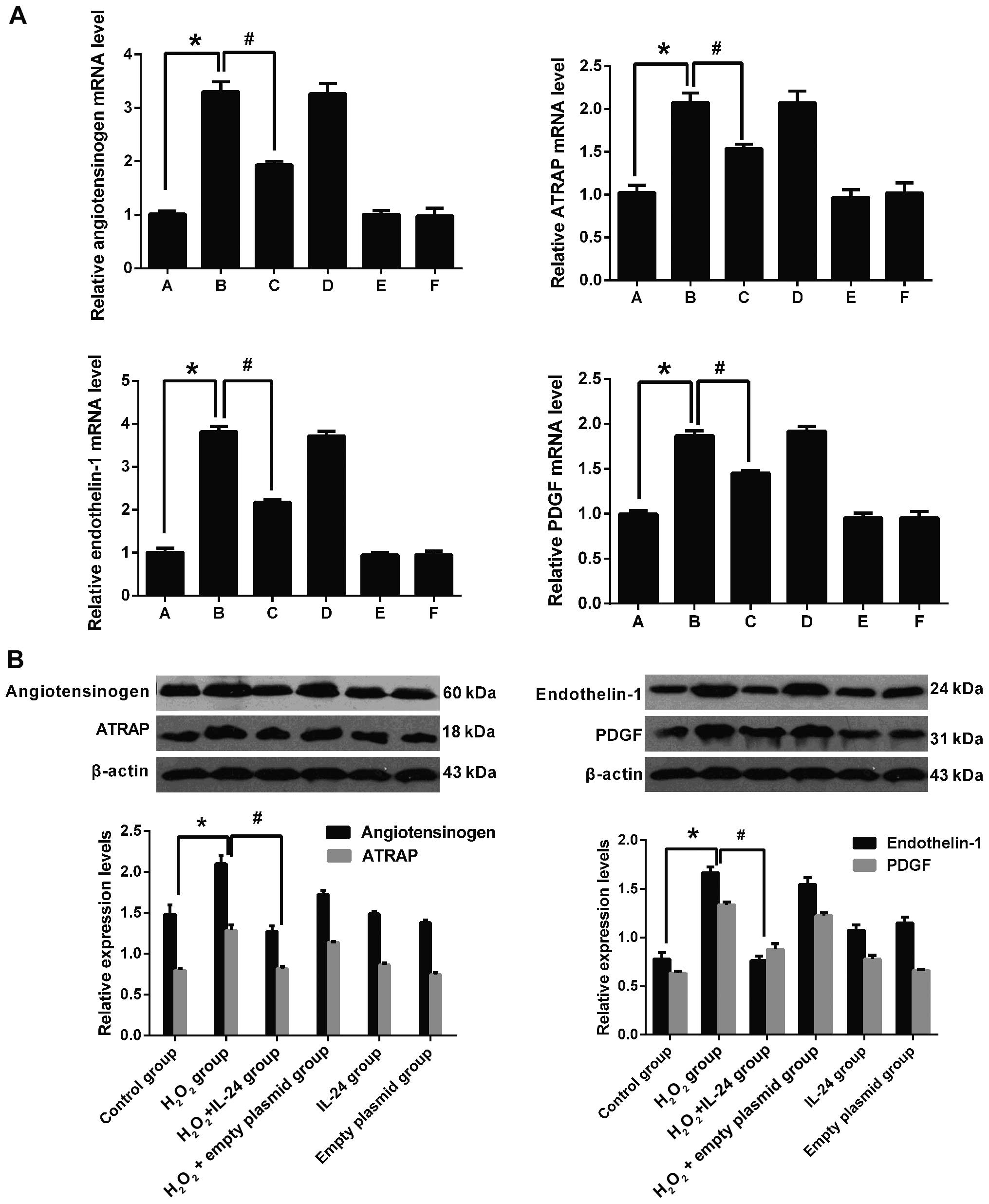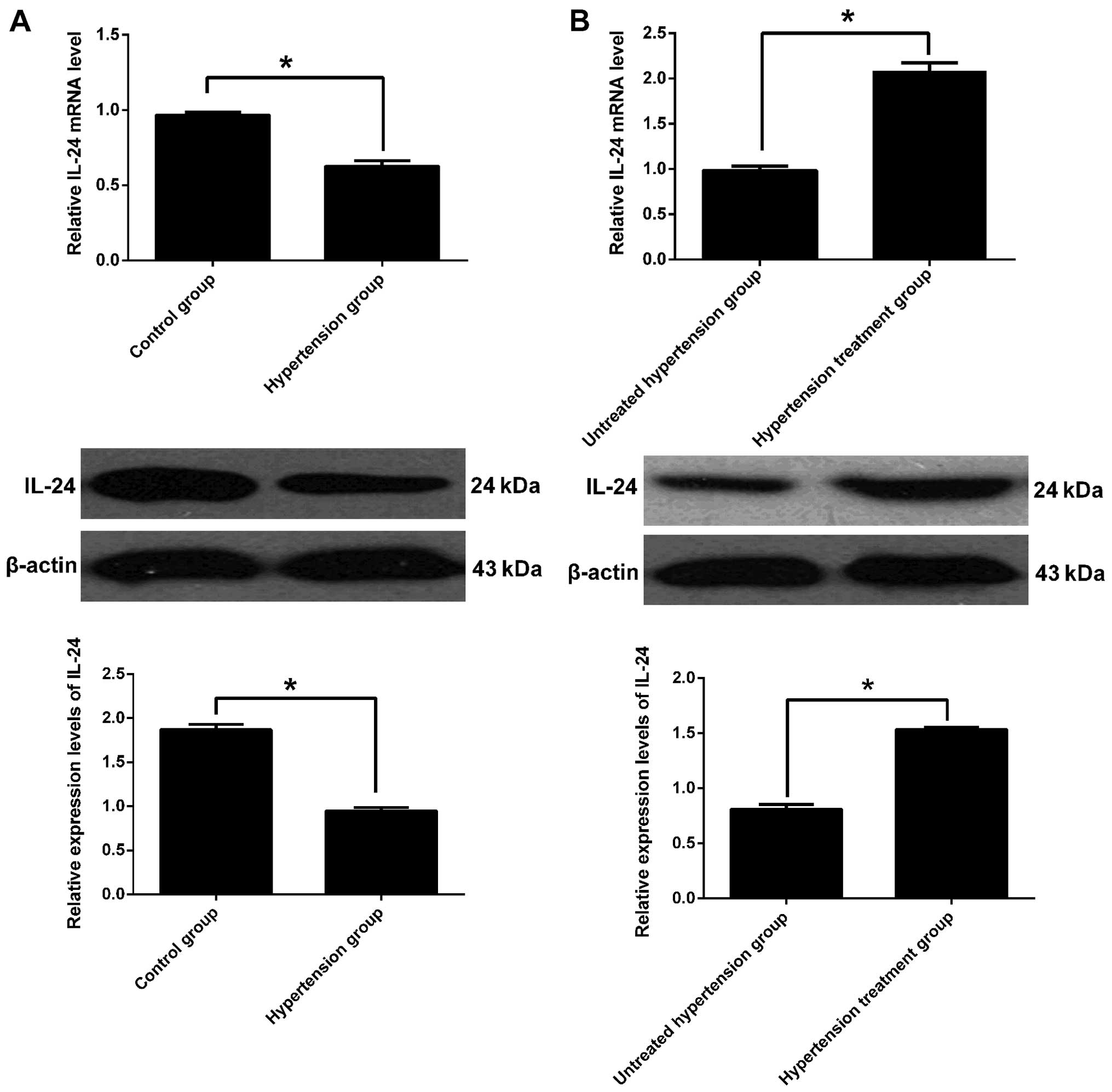|
1
|
Cohuet G and Struijker-Boudier H:
Mechanisms of target organ damage caused by hypertension:
Therapeutic potential. Pharmacol Ther. 111:81–98. 2006. View Article : Google Scholar
|
|
2
|
Lugo-Baruqui A, Munoz-Valle JF,
Arevalo-Gallegos S and Armendariz-Borunda J: Role of angiotensin II
in liver fibrosis-induced portal hypertension and therapeutic
implications. Hepatol Res. 40:95–104. 2010. View Article : Google Scholar
|
|
3
|
Mansia G, De Backer G, Dominiczak A,
Cifkova R, Fagard R, Germano G, Grassi G, Heagerty AM, Kjeldsen SE,
Laurent S, et al: European Society of Cardiology: 2007 ESH-ESC
Guidelines for the management of arterial hypertension: The task
force for the management of arterial hypertension of the European
Society of Hypertension (ESH) and of the European Society of
Cardiology (ESC). Blood Press. 16:135–232. 2007. View Article : Google Scholar
|
|
4
|
Okuda T, Sumiya T, Mizutani K, Tago N,
Miyata T, Tanabe T, Kato H, Katsuya T, Higaki J, Ogihara T, et al:
Analyses of differential gene expression in genetic hypertensive
rats by microarray. Hypertens Res. 25:249–255. 2002. View Article : Google Scholar : PubMed/NCBI
|
|
5
|
Yono M, Yoshida M, Yamamoto Y, Imanishi A,
Fukagawa A, Latifpour J and Eto M: Identification of potential
therapeutic targets in hypertension-associated bladder dysfunction.
BJU Int. 105:877–883. 2010. View Article : Google Scholar
|
|
6
|
Lee KM, Kang HA, Ko CB, Oh EH, Park M, Lee
HY, Choi HR, Yun CH, Jung WW, Oh JW and Kang HS: Differential gene
expression profiles in spontaneously hypertensive rats induced by
administration of enalapril and nifedipine. Int J Mol Med.
31:179–187. 2013.
|
|
7
|
Jiang H, Su ZZ, Lin JJ, Goldstein NI,
Young CS and Fisher PB: The melanoma differentiation associated
gene mda-7 suppresses cancer cell growth. Proc Natl Acad Sci USA.
93:9160–9165. 1996. View Article : Google Scholar : PubMed/NCBI
|
|
8
|
Caudell EG, Mumm JB, Poindexter N,
Ekmekcioglu S, Mhashilkar AM, Yang XH, Retter MW, Hill P, Chada S
and Grimm EA: The protein product of the tumor suppressor gene,
melanoma differentiation-associated gene 7, exhibits
immunostimulatory activity and is designated IL-24. J Immunol.
168:6041–6046. 2002. View Article : Google Scholar : PubMed/NCBI
|
|
9
|
Saeki T, Mhashilkar A, Swanson X, Zou-Yang
XH, Sieger K, Kawabe S, Branch CD, Zumstein L, Meyn RE, Roth JA, et
al: Inhibition of human lung cancer growth following
adenovirus-mediated mda-7 gene expression in vivo. Oncogene.
21:4558–4566. 2002. View Article : Google Scholar : PubMed/NCBI
|
|
10
|
Ellerhorst JA, Prieto VG, Ekmekcioglu S,
Broemeling L, Yekell S, Chada S and Grimm EA: Loss of MDA-7
expression with progression of melanoma. J Clin Oncol.
20:1069–1074. 2002. View Article : Google Scholar : PubMed/NCBI
|
|
11
|
Ross JS, Stagliano NE, Donovan MJ,
Breitbart RE and Ginsburg GS: Atherosclerosis: A cancer of the
blood vessels? Am J Clin Pathol. 116(Suppl): S97–S107. 2001.
|
|
12
|
Menezes ME, Shen XN, Das SK, Emdad L, Guo
C, Yuan F, Li YJ, Archer MC, Zacksenhaus E, Windle JJ, et al:
MDA-7/IL-24 functions as a tumor suppressor gene in vivo in
transgenic mouse models of breast cancer. Oncotarget.
6:36928–36942. 2015.PubMed/NCBI
|
|
13
|
Lin C, Liu H, Li L, Zhu Q, Liu H, Ji Z,
Liao J, Lang J, Wu J and Fan J: MDA-7/IL-24 inhibits cell survival
by inducing apoptosis in nasopharyngeal carcinoma. Int J Clin Exp
Med. 7:4082–4090. 2014.
|
|
14
|
Menezes ME, Bhatia S, Bhoopathi P, Das SK,
Emdad L, Dasgupta S, Dent P, Wang XY, Sarkar D and Fisher PB:
MDA-7/IL-24: multifunctional cancer killing cytokine. Adv Exp Med
Biol. 818:127–153. 2014. View Article : Google Scholar : PubMed/NCBI
|
|
15
|
Fliss H and Gattinger D: Apoptosis in
ischemic and reperfused rat myocardium. Circ Res. 79:949–956. 1996.
View Article : Google Scholar : PubMed/NCBI
|
|
16
|
Hampton MB and Orrenius S: Redox
regulation of apoptotic cell death. Biofactors. 8:1–5. 1998.
View Article : Google Scholar : PubMed/NCBI
|
|
17
|
Ying W: Deleterious network hypothesis of
apoptosis. Med Hypotheses. 50:393–398. 1998. View Article : Google Scholar : PubMed/NCBI
|
|
18
|
Puddu P, Puddu GM, Zaca F and Muscari A:
Endothelial dysfunction in hypertension. Acta Cardiol. 55:221–232.
2000. View Article : Google Scholar : PubMed/NCBI
|
|
19
|
Chang MW, Barr E, Seltzer J, Jiang YQ,
Nabel GJ, Nabel EG, Parmacek MS and Leiden JM: Cytostatic gene
therapy for vascular proliferative disorders with a constitutively
active form of the retinoblastoma gene product. Science.
267:518–522. 1995. View Article : Google Scholar : PubMed/NCBI
|
|
20
|
Ascher E, Scheinman M, Hingorani A, Seth
P, Marella VK and Jacob T: Effect of p53 gene therapy combined with
CTLA4Ig selective immunosuppression on prolonged neointima
formation reduction in a rat model. Ann Vasc Surg. 14:385–392.
2000. View Article : Google Scholar : PubMed/NCBI
|
|
21
|
Chang MW, Barr E, Lu MM, Barton K and
Leiden JM: Adenovirus-mediated over-expression of the
cyclin/cyclin-dependent kinase inhibitor, p21 inhibits vascular
smooth muscle cell proliferation and neointima formation in the rat
carotid artery model of balloon angioplasty. J Clin Invest.
96:2260–2268. 1995. View Article : Google Scholar : PubMed/NCBI
|
|
22
|
Huang J and Kontos CD: Inhibition of
vascular smooth muscle cell proliferation, migration, and survival
by the tumor suppressor protein PTEN. Arterioscler Thromb Vasc
Biol. 22:745–751. 2002. View Article : Google Scholar : PubMed/NCBI
|
|
23
|
Xue B, Pamidimukkala J and Hay M: Sex
differences in the development of angiotensin II-induced
hypertension in conscious mice. Am J Physiol Heart Circ Physiol.
288:H2177–H2184. 2005. View Article : Google Scholar : PubMed/NCBI
|
|
24
|
Rugale C, Delbosc S, Cristol JP, Mimran A
and Jover B: Sodium restriction prevents cardiac hypertrophy and
oxidative stress in angiotensin II hypertension. Am J Physiol Heart
Circ Physiol. 284:H1744–H1750. 2003. View Article : Google Scholar : PubMed/NCBI
|
|
25
|
Burdon RH and Gill V: Cellularly generated
active oxygen species and HeLa cell proliferation. Free Radic Res
Commun. 19:203–213. 1993. View Article : Google Scholar : PubMed/NCBI
|
|
26
|
Pfaffl MW: A new mathematical model for
relative quantification in real-time RT-PCR. Nucleic Acids Res.
29:e452001. View Article : Google Scholar : PubMed/NCBI
|
|
27
|
Rao GN and Berk BC: Active oxygen species
stimulate vascular smooth muscle cell growth and proto-oncogene
expression. Circ Res. 70:593–599. 1992. View Article : Google Scholar : PubMed/NCBI
|
|
28
|
Touyz RM and Schiffrin EL: Reactive oxygen
species in vascular biology: Implications in hypertension.
Histochem Cell Biol. 122:339–352. 2004. View Article : Google Scholar : PubMed/NCBI
|
|
29
|
Ruef J, Hu ZY, Yin LY, Wu Y, Hanson SR,
Kelly AB, Harker LA, Rao GN, Runge MS and Patterson C: Induction of
vascular endothelial growth factor in balloon-injured baboon
arteries. A novel role for reactive oxygen species in
atherosclerosis. Circ Res. 81:24–33. 1997. View Article : Google Scholar : PubMed/NCBI
|
|
30
|
Chua CC, Hamdy RC and Chua BH:
Upregulation of vascular endothelial growth factor by
H2O2 in rat heart endothelial cells. Free
Radic Biol Med. 25:891–897. 1998. View Article : Google Scholar : PubMed/NCBI
|
|
31
|
Verdonk K, Saleh L, Lankhorst S, Smilde
JE, van Ingen MM, Garrelds IM, Friesema EC, Russcher H, van den
Meiracker AH, Visser W and Danser AH: Association studies suggest a
key role for endothelin-1 in the pathogenesis of preeclampsia and
the accompanying renin-angiotensin-aldosterone system suppression.
Hypertension. 65:1316–1323. 2015. View Article : Google Scholar : PubMed/NCBI
|
|
32
|
Puddu P, Puddu GM, Cravero E, Ferrari E
and Muscari A: The genetic basis of essential hypertension. Acta
Cardiol. 62:281–293. 2007. View Article : Google Scholar : PubMed/NCBI
|
|
33
|
Hollenberg NK: Genes, hypertension, and
intermediate phenotypes. Curr Opin Cardiol. 11:457–463. 1996.
View Article : Google Scholar : PubMed/NCBI
|
|
34
|
Zou Y, Hu Y, Metzler B and Xu Q: Signal
transduction in arterio-sclerosis: mechanical stress-activated MAP
kinases in vascular smooth muscle cells (review). Int J Mol Med.
1:827–834. 1998.PubMed/NCBI
|
|
35
|
von der Leyen HE, Gibbons GH, Morishita R,
Lewis NP, Zhang L, Nakajima M, Kaneda Y, Cooke JP and Dzau VJ: Gene
therapy inhibiting neointimal vascular lesion: In vivo transfer of
endothelial cell nitric oxide synthase gene. Proc Natl Acad Sci
USA. 92:1137–1141. 1995. View Article : Google Scholar : PubMed/NCBI
|
|
36
|
Yonemitsu Y, Kaneda Y, Tanaka S, Nakashima
Y, Komori K, Sugimachi K and Sueishi K: Transfer of wild-type p53
gene effectively inhibits vascular smooth muscle cell proliferation
in vitro and in vivo. Circ Res. 82:147–156. 1998. View Article : Google Scholar : PubMed/NCBI
|
|
37
|
Markowitz SD: Atherosclerosis, just
another cancer? J Clin Invest. 100:2143–2145. 1997. View Article : Google Scholar : PubMed/NCBI
|
|
38
|
Ross JS, Stagliano NE, Donovan MJ,
Breitbart RE and Ginsburg GS: Atherosclerosis and cancer: common
molecular pathways of disease development and progression. Ann N Y
Acad Sci. 947:271–292; discussion 292–273. 2001. View Article : Google Scholar
|
|
39
|
Schwartz SM, deBlois D and O'Brien ER: The
intima. Soil for atherosclerosis and restenosis. Circ Res.
77:445–465. 1995. View Article : Google Scholar : PubMed/NCBI
|
|
40
|
Davies MG and Hagen PO: Pathobiology of
intimal hyperplasia. Br J Surg. 81:1254–1269. 1994. View Article : Google Scholar : PubMed/NCBI
|
|
41
|
Chen J, Chada S, Mhashilkar A and Miano
JM: Tumor suppressor MDA-7/IL-24 selectively inhibits vascular
smooth muscle cell growth and migration. Mol Ther. 8:220–229. 2003.
View Article : Google Scholar : PubMed/NCBI
|
|
42
|
Ramesh R, Mhashilkar AM, Tanaka F, Saito
Y, Branch CD, Sieger K, Mumm JB, Stewart AL, Boquoi A, Dumoutier L,
et al: Melanoma differentiation-associated gene 7/interleukin
(IL)-24 is a novel ligand that regulates angiogenesis via the IL-22
receptor. Cancer Res. 63:5105–5113. 2003.PubMed/NCBI
|
|
43
|
Lee KM, Kang HA, Park M, Lee HY, Choi HR,
Yun CH, Oh JW and Kang HS: Interleukin-24 attenuates
β-glycerophosphate-induced calcification of vascular smooth muscle
cells by inhibiting apoptosis, the expression of calcification and
osteoblastic markers, and the Wnt/β-catenin pathway. Biochem
Biophys Res Commun. 428:50–55. 2012. View Article : Google Scholar : PubMed/NCBI
|
|
44
|
Lee KM, Kang HA, Park M, Lee HY, Song MJ,
Ko K, Oh JW and Kang HS: Interleukin-24 suppresses the growth of
vascular smooth muscle cells by inhibiting H(2)O(2)-induced
reactive oxygen species production. Pharmacology. 90:332–341. 2012.
View Article : Google Scholar : PubMed/NCBI
|
|
45
|
Vargas-Alarcon G, Posadas-Romero C,
Villarreal-Molina T, Alvarez-León E, Angeles-Martinez J,
Posadas-Sanchez R, Monroy-Muñoz I, Luna-Fuentes S, González-Salazar
C, Ramirez-Bello J, et al: IL-24 gene polymorphisms are associated
with cardiometabolic parameters and cardiovascular risk factors but
not with premature coronary artery disease: the genetics of
atherosclerotic disease Mexican study. J Interferon Cytokine Res.
34:659–666. 2014. View Article : Google Scholar : PubMed/NCBI
|
|
46
|
Yacoub A, Mitchell C, Lister A, Lebedeva
IV, Sarkar D, Su ZZ, Sigmon C, McKinstry R, Ramakrishnan V, Qiao L,
et al: Melanoma differentiation-associated 7 (interleukin 24)
inhibits growth and enhances radiosensitivity of glioma cells in
vitro and in vivo. Clin Cancer Res. 9:3272–3281. 2003.PubMed/NCBI
|
|
47
|
Shimokawa H: Endothelial dysfunction in
hypertension. J Atheroscler Thromb. 4:118–127. 1998. View Article : Google Scholar : PubMed/NCBI
|
|
48
|
McAllister AS, Atkinson AB, Johnston GD,
Hadden DR, Bell PM and McCance DR: Basal nitric oxide production is
impaired in offspring of patients with essential hypertension. Clin
Sci (Lond). 97:141–147. 1999. View Article : Google Scholar
|
|
49
|
Panneerselvam J, Jin J, Shanker M,
Lauderdale J, Bates J, Wang Q, Zhao YD, Archibald SJ, Hubin TJ and
Ramesh R: IL-24 inhibits lung cancer cell migration and invasion by
disrupting the SDF-1/CXCR4 signaling axis. PLoS One.
10:e01224392015. View Article : Google Scholar : PubMed/NCBI
|
|
50
|
Ma Q, Deng X, Jin B, Zhang Y, Luo D, Song
H, Wang P, Zhang C, Li X, Shi Y, et al: A novel human
interleukin-24 peptide created by computer-guided design
contributes to suppression of proliferation in esophageal squamous
cell carcinoma Eca-109 cells. Oncol Rep. 33:193–200. 2015.
|
|
51
|
Jiang G, Yang CS, Xu D, Sun C, Zheng JN,
Lei TC and Liu YQ: Potent anti-tumour activity of a novel
conditionally replicating adenovirus for melanoma via inhibition of
migration and invasion. Br J Cancer. 110:2496–2505. 2014.
View Article : Google Scholar : PubMed/NCBI
|
|
52
|
Yang R, Hai C, Li R and Wu D:
Dose-response relationship between cell proliferation and hydrogen
peroxide. Carcinog Teratog Mutagen. 9:92–98. 1997.
|
|
53
|
Li L, Wei Y, Cai J, et al: Hydrogen
peroxide induced apoptosis in humanvascular endothelial cells in
vitro and expression of Caspase-3. Shaanxi Medical Journal.
37:960–961. 2008.
|
|
54
|
Chen QM, Tu VC, Wu Y and Bahl JJ: Hydrogen
peroxide dose dependent induction of cell death or hypertrophy in
cardio-myocytes. Arch Biochem Biophys. 373:242–248. 2000.
View Article : Google Scholar : PubMed/NCBI
|















